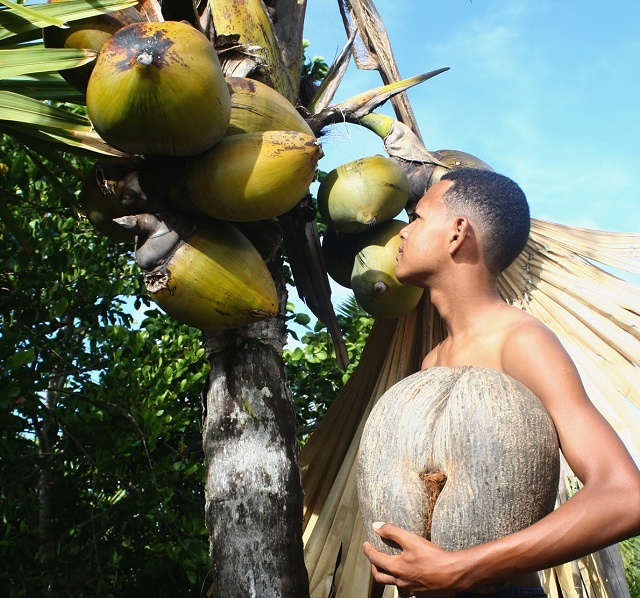New policy to guide how Seychelles' genetic resources can be used by researchers, businesses

Seychelles is home to many species of plants and animals that are found nowhere else like the world-renowned coco de mer. (Gerard Larose, Seychelles Tourism Board)
(Seychelles News Agency) - Seychelles has launched a policy that will guide how researchers and foreign institutions can access the country’s genetic resources and the local knowledge associated with their traditional use.
Under the Convention on Biological Diversity -- an international treaty signed by 198 countries including Seychelles -- genetic resources are any material of plant, animal, microbial or other origin containing units of heredity. These resources can be used for research and commercial purposes as both plants and animals can have potential compounds that can benefit mankind.
Seychelles is home to many species of plants and animals that are found nowhere else. Such species include the renowned coco de mer -- the world’s largest nut. Although the nut’s mysterious origin was finally established after the Seychelles islands were explored and settled, there are still many questions about the potential use of the coco de mer kernel that have been eluding enquiring minds until the present day.
The focal point for the project, Denis Matatiken, said that “there is an increasing interest from researchers to further their knowledge and understanding about endemic species that are unique to Seychelles, and the complex interactions that exist with their surrounding environment.”
Matatiken added that “to others, their interests are different and they want to know the economic potential that exists in the species found in the marine and terrestrial environment.”
When it comes to plants with medicinal properties, he added that it is important to note that “our great-grandparents made use of medicinal and other plants for their survival.”
It was very common in the past to find a variety of medicinal plants growing among other foliage and flowers in the front yards of many of the homes of the Islanders.
 |
| Plants with medicinal properties were found in many home gardens of islanders in the past. (Gilly Jean, Seychelles News Agency) Photo License: CC-BY |
“Our great-grandparents have used biodiversity to treat and cure various diseases. Such knowledge on the traditional use of biodiversity has been transferred to many generations, and today, many of us, including the herbalists, are making use of such knowledge which they inherited from our forefathers,” he said.
This is why the setting up of a policy is crucial for a biological hotspot like Seychelles because many big multinational companies are after such knowledge for commercialization.
The new policy establishes the framework to access the Seychelles' genetic resources and a mechanism to share the benefits that could result from their use. The access and benefit sharing policy was developed under a project being implemented by the United Nation Development Programme (UNDP), funded by the Global Environment Facility (GEF).
At the moment, Seychelles only have interim measures in place to protect its genetic resources and the traditional knowledge associated with them said the Minister for Environment, Energy and Climate Change, Wallace Cosgrow, at the launching ceremony recently.
“The policy will provide us with the right tools and actions needed to ensure that we receive fair and equitable benefits arising from research or the commercial utilisation of our genetic resources,” said Cosgrow.
He added that “the flora and fauna are so unique, some of which only grow and live in this remote part of the world giving Seychelles the status of being considered a biological hotspot.”
Cosgrow said that currently the government “has designated almost 50 percent of our terrestrial area as protected areas and have given our commitments to increase the marine areas under legal protection from 0.01 percent to 30 percent of our EEZ (Exclusive Economic Zone) by 2022.”
Seychelles, an archipelago in the western Indian Ocean, is one of 24 countries across the globe getting assistance under the project to implement its national obligation under the Nagoya Protocol on Access and Benefit Sharing. The Protocol set up in 2010 is a supplementary agreement to the Convention on Biological Diversity.
The Nagoya Protocol aims at fair and equitable sharing of benefits arising out of the utilisation of genetic resources, to contribute to the conservation and sustainable use of biodiversity.
Under the policy, the island nation will have a basis to establish a legislative and institutional framework to help fulfil its obligations under various multilateral agreements.





